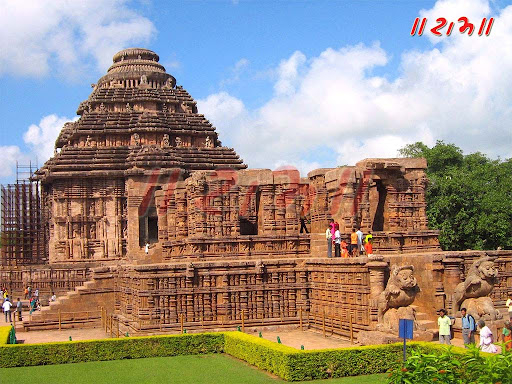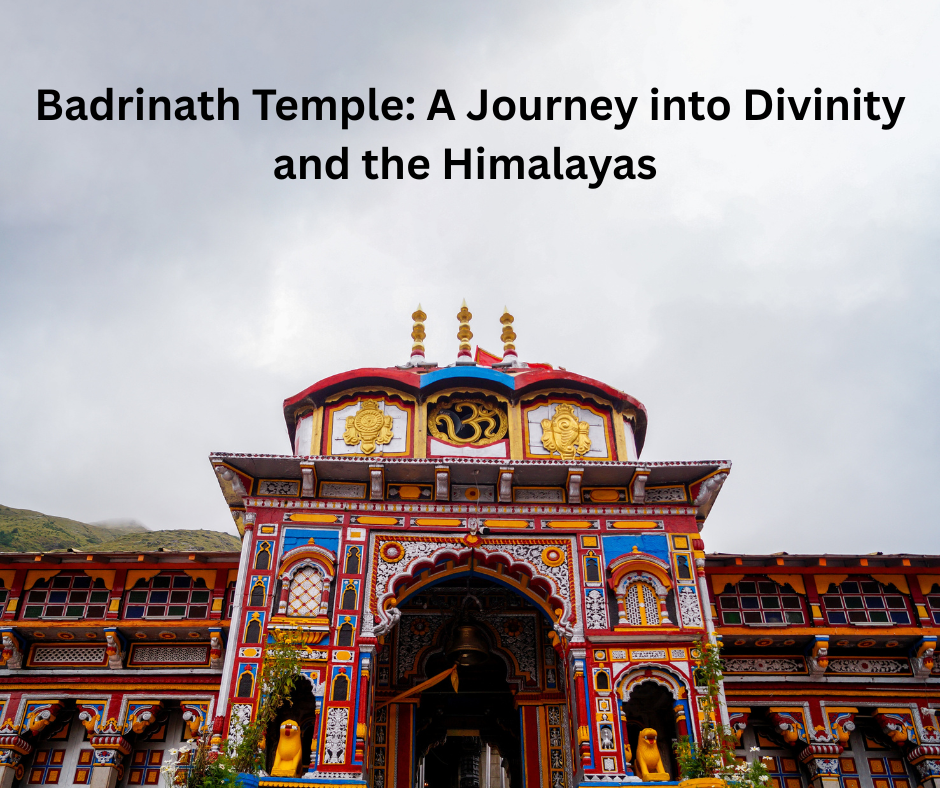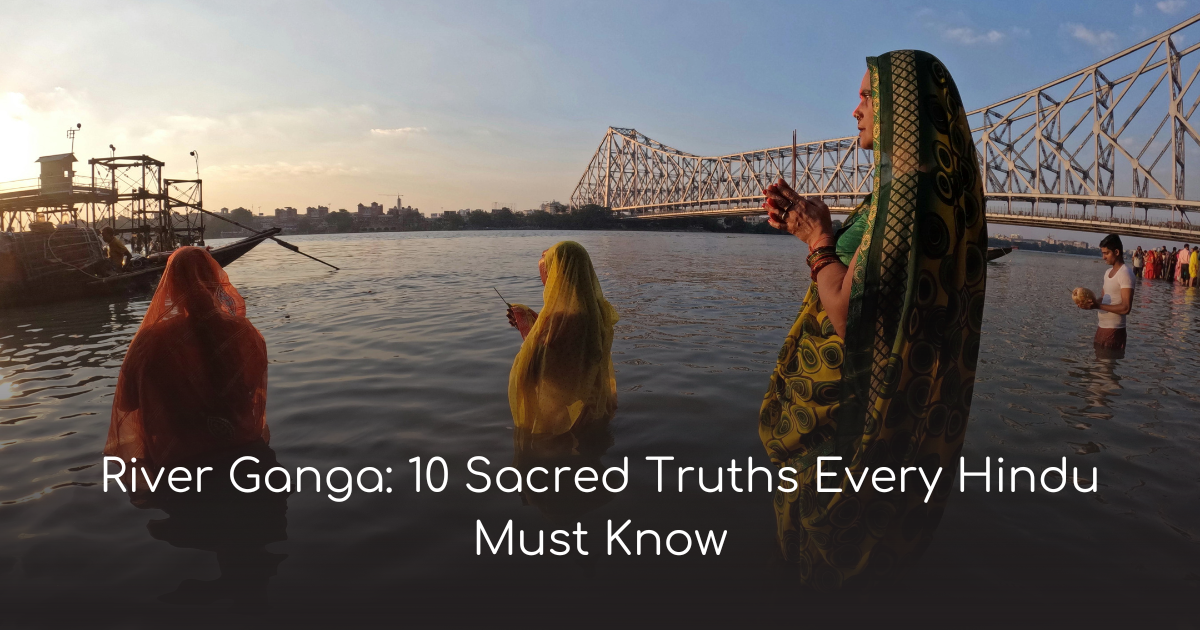konark sun temple: 7 stunning facts that inspire awe

Discover the divine beauty of Konark Sun Temple—history, myths, architecture & festivals. A must-visit gem of Odisha’s spiritual heritage.
Konark Sun Temple: Divine Light of Indian Heritage
The Konark Sun Temple is more than just a marvel of stone and art—it's a cosmic calendar, a chariot of the Sun God, and a symbol of India’s spiritual wisdom carved in granite. Situated in the heart of Odisha, this awe-inspiring monument stands as a timeless ode to Surya, the Vedic deity of the sun. The Konark Sun Temple not only draws devotees and tourists alike but also holds profound historical, astronomical, and mythological significance.
From its celestial alignment to the wheel-shaped symbolism of time, the Konark Sun Temple speaks a language of devotion, science, and divine architecture. In this blog, we explore its majestic past, intricate design, sacred stories, and why it's considered one of the most powerful expressions of ancient Indian civilization.
Unfolding the History of Konark Sun Temple
The history of Konark Temple dates back to the 13th century CE, when King Narasimhadeva I of the Eastern Ganga Dynasty commissioned it as a tribute to the Sun God. Its very name is derived from two Sanskrit words: Kona (angle) and Arka (Sun), symbolizing the temple's angular positioning with respect to the sun’s movement.
Key Historical Milestones:
-
Built around 1250 CE, with help from over 12,000 artisans
-
Constructed entirely from black granite and laterite stones
-
Strategically located near the Bay of Bengal to reflect Surya’s connection with dawn
The history of Konark Temple reveals that it was not merely a temple but a solar observatory, perfectly aligned to capture the first rays of the rising sun through its sanctum. This alignment made it an astronomical and religious marvel of its time.
Foreign travelers like Abul Fazl, and later European sailors, referred to it as the "Black Pagoda" due to its dark structure and magnetic pull.
Even though the main sanctum (Vimana) is now in ruins, the remaining Jagamohana (assembly hall) and Natya Mandapa (dance hall) tell stories of a glorious past that continues to inspire.
The Grandeur of Sun Temple of Odisha
The Sun Temple of Odisha is the ultimate celebration of the Sun God’s power and movement. Declared a UNESCO World Heritage Site in 1984, it attracts scholars, architects, artists, and spiritual seekers from around the globe.
What makes the Sun Temple of Odisha extraordinary is how it merges cosmic symbolism with artistic mastery. The entire temple complex is designed in the form of a gigantic chariot with 12 pairs of intricately carved stone wheels, each representing the months of the Hindu calendar. The seven horses that pull this chariot symbolize the seven days of the week.
Throughout the temple, carvings depict:
-
Surya in his three daily forms: rising, mid-day, and setting sun
-
Musical instruments, warriors, animals, and celestial beings
-
Sacred feminine energy and spiritual union
The Sun Temple of Odisha is not just a structure—it is a spiritual calendar, solar clock, and sacred space, all wrapped in timeless beauty.
Architectural Genius of Konark Sun Temple
When discussing the architecture of Konark Sun Temple, one is reminded of a symphony of engineering, spirituality, and symbolism that no modern building can replicate.
Highlights of its architectural genius include:
-
Chariot Formation: The temple was built as a colossal chariot of Surya, drawn by seven stone horses and rolling on 24 elaborately carved wheels.
-
Wheels as Sundials: The wheels of the temple act as time-telling devices (sundials), which could calculate time to minute-level precision.
-
Magnetic Engineering: Legends say a massive lodestone was placed at the top of the temple, which kept the iron beams suspended and disturbed ship compasses.
-
Advanced Stone Carving: Erotic sculptures, war scenes, spiritual poses—all carved with mathematical and anatomical precision.
The architecture of Konark Sun Temple reflects the harmony between the macrocosm (universe) and the microcosm (human life).
🎭 Sculptures of Konark – Life in Stone
The sculptures of Konark are among the most expressive and intricate ever created in Indian temple art. These carvings reflect:
-
Eroticism from the Tantric school of thought
-
Vedic rituals and celestial dances
-
Musicians, lovers, yogis, animals, warriors, and even mythical creatures
From storytelling to sacred symbolism, the sculptures of Konark portray the entire human journey—from birth and sensuality to liberation and union with the divine.
The influence of spirituality, sensuality, and sacred geometry is visible in every inch of the temple’s outer and inner walls.
Let’s continue the rest of the signs and the action plan in Part 2 – you don’t want to miss it!
In Part 1, we uncovered the majestic history, intricate architecture, and stunning sculptures of the Konark Sun Temple. Now, let’s journey further into the mysteries and myths that surround this divine structure, celebrate its festivals, and guide you on how to experience its brilliance firsthand.
🌄 Myths About Konark Sun Temple
The myths about Konark Sun Temple are as powerful as its stone foundation. They blend historical truths with divine legends, offering a mystical aura that still surrounds the monument.
Some of the most popular myths include:
-
The Floating Idol: It’s believed the sanctum once housed a giant magnet that kept the main Surya idol suspended in mid-air. This mystical mechanism reportedly disturbed passing ships’ compasses, causing navigational disasters. Eventually, it was removed by invaders or colonizers, leading to the collapse of the temple’s main tower.
-
The Shadowless Structure: Locals say that the main temple had no shadow at noon, a claim hinting at the architects’ astronomical genius. Though now a ruin, this tale lives on in local oral traditions.
-
Dharma’s Sacrifice: A lesser-known legend speaks of Dharma, the son of the chief architect, who sacrificed himself to complete the temple by revealing the final engineering secret that no one could solve for years.
-
Tantric Energy Gateways: Tantrics believe the temple is built on powerful geomagnetic lines, with specific carvings and orientations designed to control spiritual energy. The structure was said to be a protective mandala for the region.
These myths about Konark Sun Temple add a deeper spiritual dimension to its already magnificent form.
☀️ Surya – The Eternal Light of India
The central deity of the Konark temple, Sun God Surya, holds a highly revered place in Vedic scriptures. More than just a celestial body, Surya is seen as the provider of life, health, and enlightenment.
Surya’s sacred importance:
-
Mentioned in the Rigveda as the eye of the cosmos
-
Associated with healing, vision, and truth
-
Worshipped as the remover of darkness, both literal and spiritual
Inside the Konark complex, three Surya idols (now in museums) represented the morning, noon, and evening forms of the sun—showcasing how the ancients aligned art and astronomy.
Worship of Sun God Surya is still practiced today through rituals like Surya Namaskar, and pilgrimages to temples like Konark and Modhera.
🎉 Festivals at Konark – A Cultural Extravaganza
The festivals at Konark turn the temple into a grand stage of devotion and celebration. It’s when the spirit of the Sun God radiates through music, dance, and spiritual rituals.
Top festivals at Konark include:
-
Konark Dance Festival: Held every December, this five-day cultural event features classical Indian dance forms like Bharatanatyam, Odissi, Kathak, and more. The backdrop of the majestic temple makes it a surreal experience.
-
Chandrabhaga Mela: A sacred bathing festival where thousands gather at the nearby Chandrabhaga beach to take a holy dip and offer prayers to the rising sun.
-
Rath Yatra of Konark: Similar to the Puri Jagannath Rath Yatra, this procession celebrates Surya’s cosmic journey.
-
Local fairs and spiritual gatherings: Handicraft exhibitions, folk performances, and spiritual discourses make these festivals at Konark deeply enriching.
These festivals preserve the living traditions that make Konark not just a monument, but a heartbeat of spiritual culture.
🛕 Ancient Indian Temples and Their Wisdom
The Konark Sun Temple stands among the greatest ancient Indian temples, built with principles that fused cosmic science, philosophy, and community life.
Comparing Konark with other temples like:
-
Khajuraho – famous for erotic carvings symbolizing tantric union
-
Brihadeeswarar (Tanjore) – showcasing astronomical alignments
-
Modhera Sun Temple – also dedicated to Surya, built by the Solanki kings
What makes ancient Indian temples unique:
-
Built using Vastu Shastra (spatial science)
-
Oriented according to celestial movements
-
Served as educational, economic, and spiritual hubs
Konark stands as a testimony to the unmatched wisdom of ancient Indian temples, where every stone carries sacred intent.
📍 Odisha Tourism and Sacred Places to Visit
If you're planning a trip to Konark, here’s a guide to Odisha’s spiritual and scenic offerings. The Odisha tourism places near Konark complement the temple experience with natural beauty and sacred energy.
Places to explore:
-
Puri Jagannath Temple (35 km): A major pilgrimage and part of the Char Dham
-
Lingaraj Temple, Bhubaneswar: A masterclass in Kalinga-style architecture
-
Udayagiri & Khandagiri Caves: Jain heritage and rock-cut inscriptions
-
Chilika Lake: Asia’s largest brackish water lagoon, bird sanctuary
Travel tip: For a spiritually enriching and hassle-free trip, plan your transport and temple tours via TravelEscape.me. They offer customized spiritual travel packages across Odisha.
Best time to visit? October to February, when the weather is pleasant and major festivals are celebrated.
🧳 Konark Temple – A UNESCO World Heritage Site

The Konark Temple UNESCO World Heritage Site status, awarded in 1984, marked global recognition of its architectural, cultural, and spiritual significance.
Preservation Efforts:
-
Managed by Archaeological Survey of India (ASI)
-
Restoration of stone structures, sculptures, and drainage systems
-
Controlled tourism to reduce impact
-
Awareness programs and cultural events to involve the community
Despite challenges from sea winds, salt damage, and previous invasions, Konark Temple’s UNESCO World Heritage Site designation ensures it remains protected for future generations.
🌟 Conclusion: A Legacy of Light and Devotion
The Konark Sun Temple is not just a structure—it’s a cosmic message carved in stone. It reminds us that time, nature, divinity, and humanity are interconnected.
From its mythic origins to celestial alignment, from spiritual carvings to cultural festivals—it stands as a monument of light, wisdom, and eternal energy.
In an age of modern distractions, places like Konark bring us back to our roots, our dharma, and our cosmic connection.
✅ Final CTA
Ready to experience the divine aura of Konark?
Plan your sacred journey today with TravelEscape.me – your trusted guide to spiritual India. Embrace history, devotion, and beauty all in one unforgettable trip.
🙋♂️ Frequently Asked Questions (FAQs) about Konark Sun Temple
1. What is the Konark Sun Temple famous for?
The Konark Sun Temple is famous for its stunning chariot-shaped architecture dedicated to the Sun God Surya, intricate stone carvings, and astronomical precision.
2. Who built the Konark Sun Temple and when?
It was built by King Narasimhadeva I of the Eastern Ganga Dynasty in the 13th century (around 1250 CE).
3. Why is the Konark Temple called the Black Pagoda?
European sailors called it the “Black Pagoda” due to its dark-colored stones and its powerful magnetic properties that allegedly disrupted ship compasses.
4. Why is the main sanctum of Konark Temple in ruins?
The main sanctum collapsed due to a combination of natural wear, invasions, and possibly the removal of a large lodestone that supported the structure.
5. What is unique about the wheels of the Konark Sun Temple?
The 24 wheels of the temple function as sundials, capable of calculating precise time based on the sun's shadow.
6. Is the Konark Sun Temple still used for worship?
No, it is no longer an active place of worship but is preserved as a sacred heritage monument and visited by devotees and tourists.
7. Are there any festivals celebrated at the temple?
Yes, major festivals include the Konark Dance Festival and Chandrabhaga Mela, both celebrating art, culture, and devotion to Surya.
8. Is the Konark Sun Temple a UNESCO World Heritage Site?
Yes, it was declared a UNESCO World Heritage Site in 1984 for its architectural brilliance and cultural significance.
9. What is the best time to visit the Konark Temple?
The ideal time to visit is October to February, when the weather is pleasant, and festivals take place.
10. How can I plan a spiritual trip to Konark and nearby temples?
For a well-guided spiritual experience, consider booking your journey through TravelEscape.me. They offer curated trips across Odisha and India.
💌 Reader’s Message
Dear Divine Seekers,
If this journey through the Konark Sun Temple has inspired awe in your heart and stirred a deeper curiosity for India’s sacred marvels, don’t stop here! The legacy of our ancestors, the genius of our temples, and the rhythm of our spiritual festivals continue to live through every stone, every story.
Whether you are a devotee, traveler, or heritage lover—Konark beckons you to witness the eternal dance of light and devotion.
🔔 Call to Action (CTA)
✨ Ready to explore the sacred marvels of India?
Plan your spiritual escape with TravelEscape.me – your trusted partner in meaningful travel.
🙏 Let your journey of discovery, devotion, and inner awakening begin today!








